| Compact pickup truck; Built in USA |
|
|
| Good condition price range: $1,200 – $3,700* |
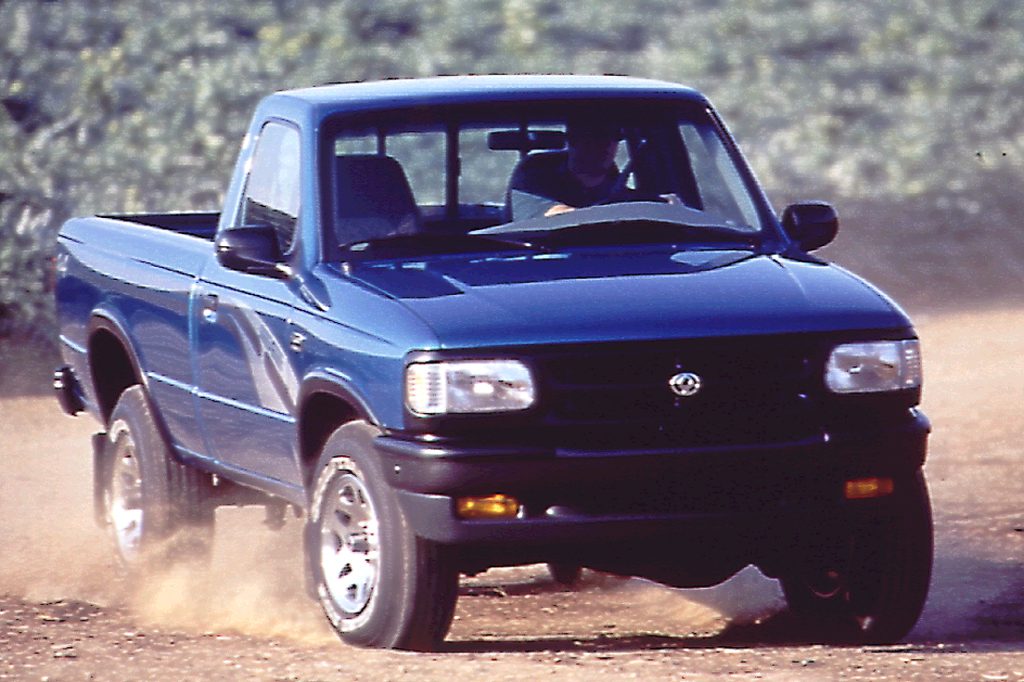
1995 Mazda B-Series regular cab
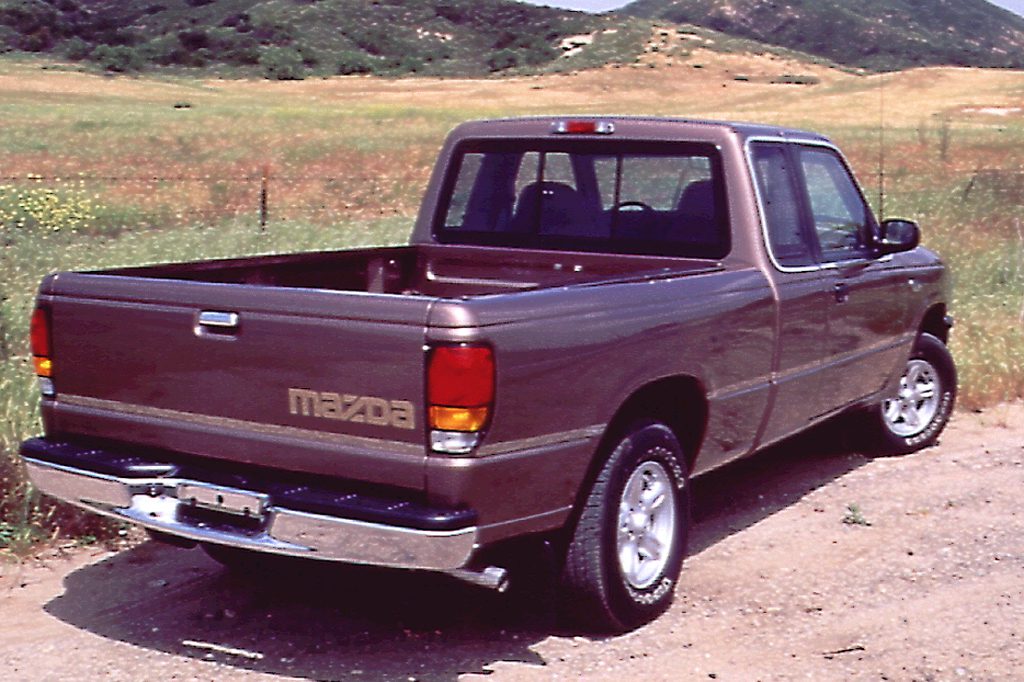
1994 Mazda B-Series Cab Plus 4 extended cab
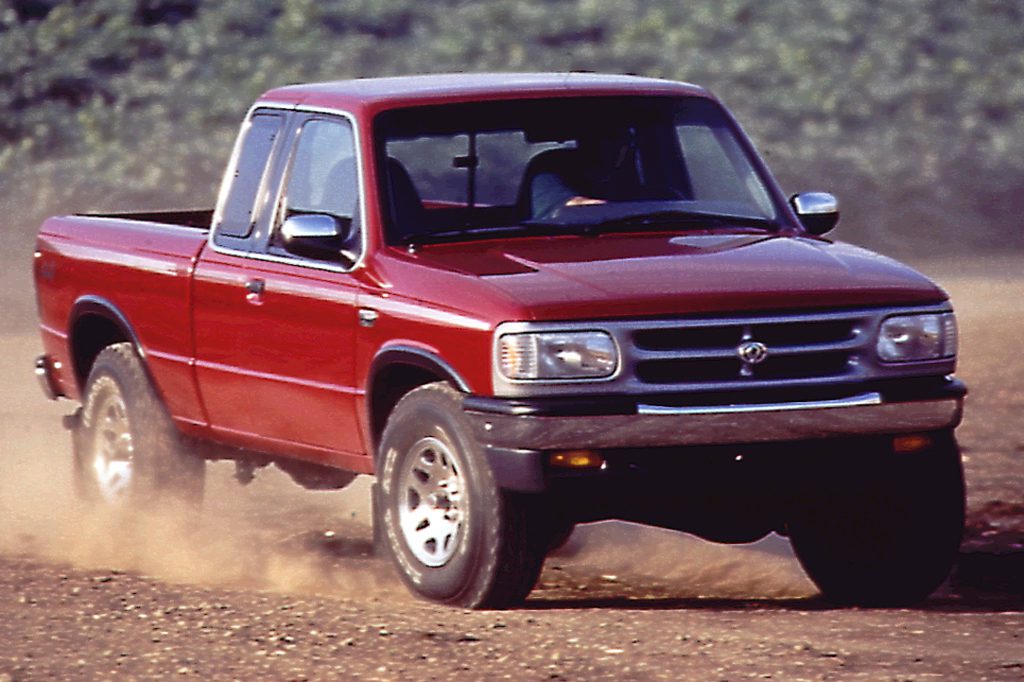
1996 Mazda B-Series Cab Plus 4 extended cab
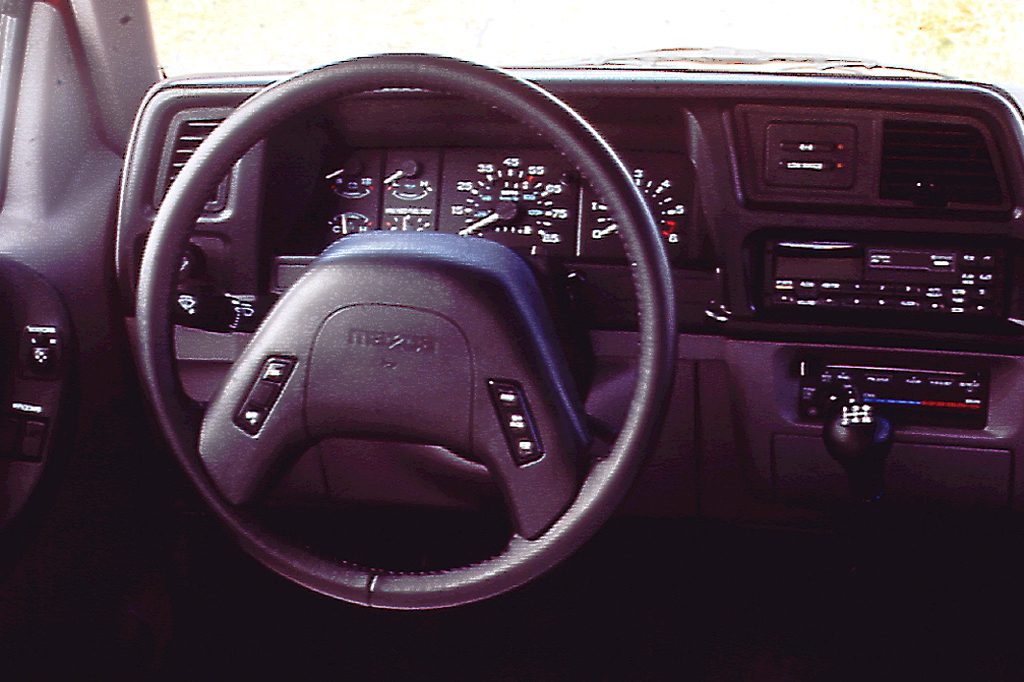
1994 Mazda B-Series interior
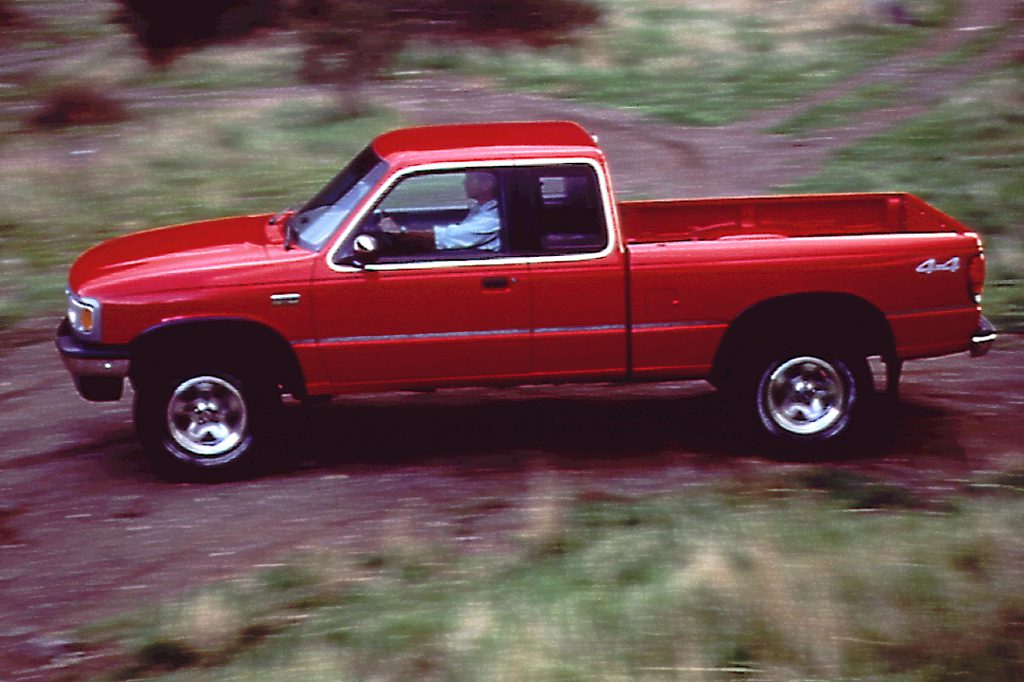
1994 Mazda B-Series Cab Plus 4 extended cab
| Pros: |
|
| Cons: |
|
Choosing between a Ford Ranger and Mazda B-Series is mainly a matter of styling details and price. Both the B-Series and its Ranger counterpart rank among the best in their class, but look also at the Chevrolet S10 or GMC Sonoma.
Overview
Ford restyled its compact Ranger pickup truck for 1993. A year later, Mazda began to sell a variant of the Ranger as the B-Series. Matching the Ranger in basic dimensions, the B-Series had its own hood, grille, front fenders, rear quarter panels, and taillamps. B-Series trucks came in two cab styles and three wheelbases: regular-cab short bed, regular-cab long bed, and extended-cab. Three engines were available: a 2.3-liter 4-cylinder for the B2300 series, a 3.0-liter V6 for the B3000, and 4.0-liter V6 for the B4000. Rear antilock brakes and five-speed manual were standard; 4-speed automatic optional. All models could have either 2- or part-time 4-wheel drive.
Yearly Updates
| 1995 B-Series Pickup Both the B-Series and the Ranger gained a new dashboard for 1995, along with a driver-side airbag. Four-wheel antilock brakes became available (standard with 4-wheel drive and with the 4.0-liter engine). |
| 1996 B-Series Pickup An optional passenger airbag came for ’96, complete with a disabling switch. |
| 1997 B-Series Pickup A 5-speed automatic transmission became available with the 4.0-liter engine. The 3.0-liter V6 was dropped, as was the regular-cab model with a 7-foot cargo bed. B-Series and companion Ranger would get restyled for ’98 with an optional 4-door extended cab model. |
